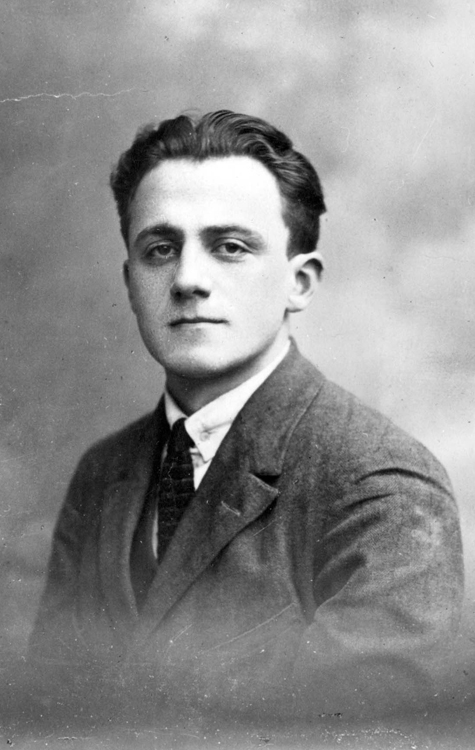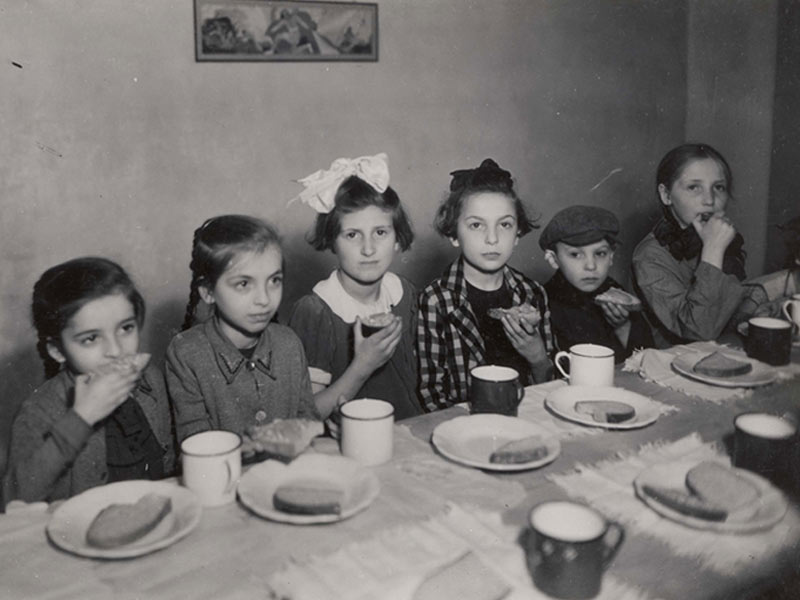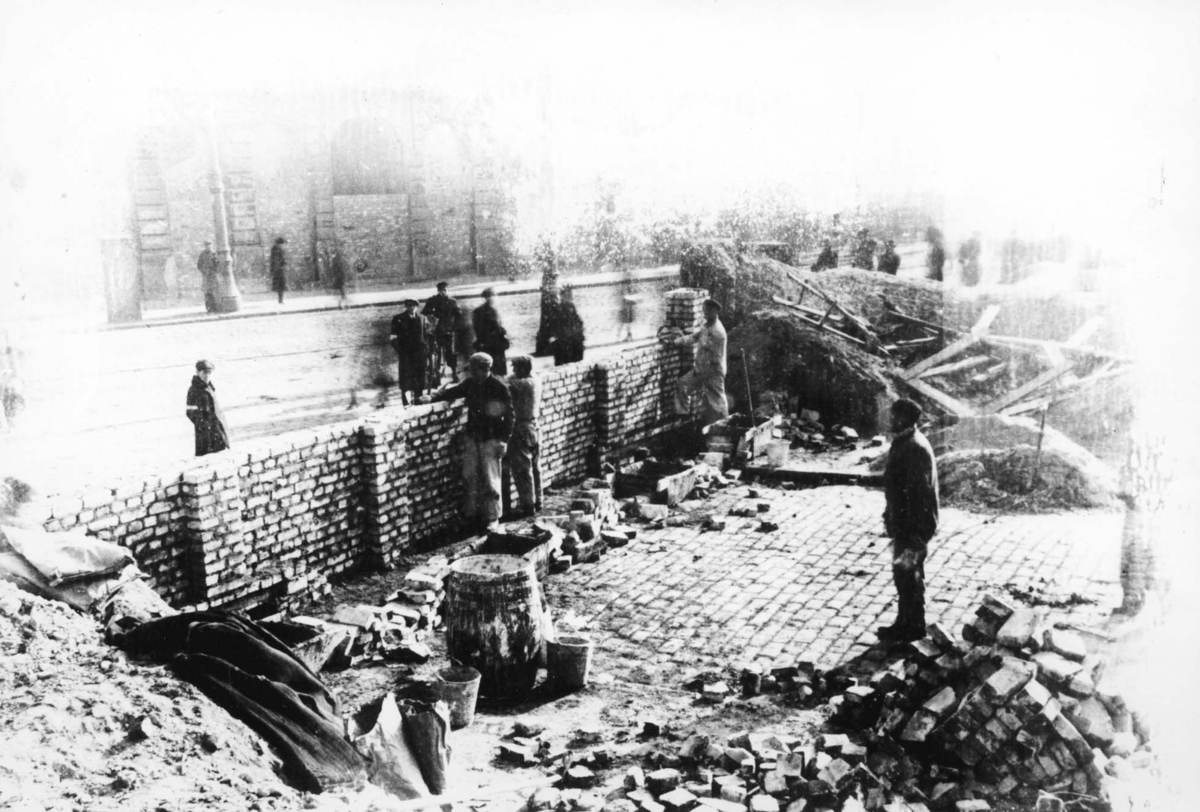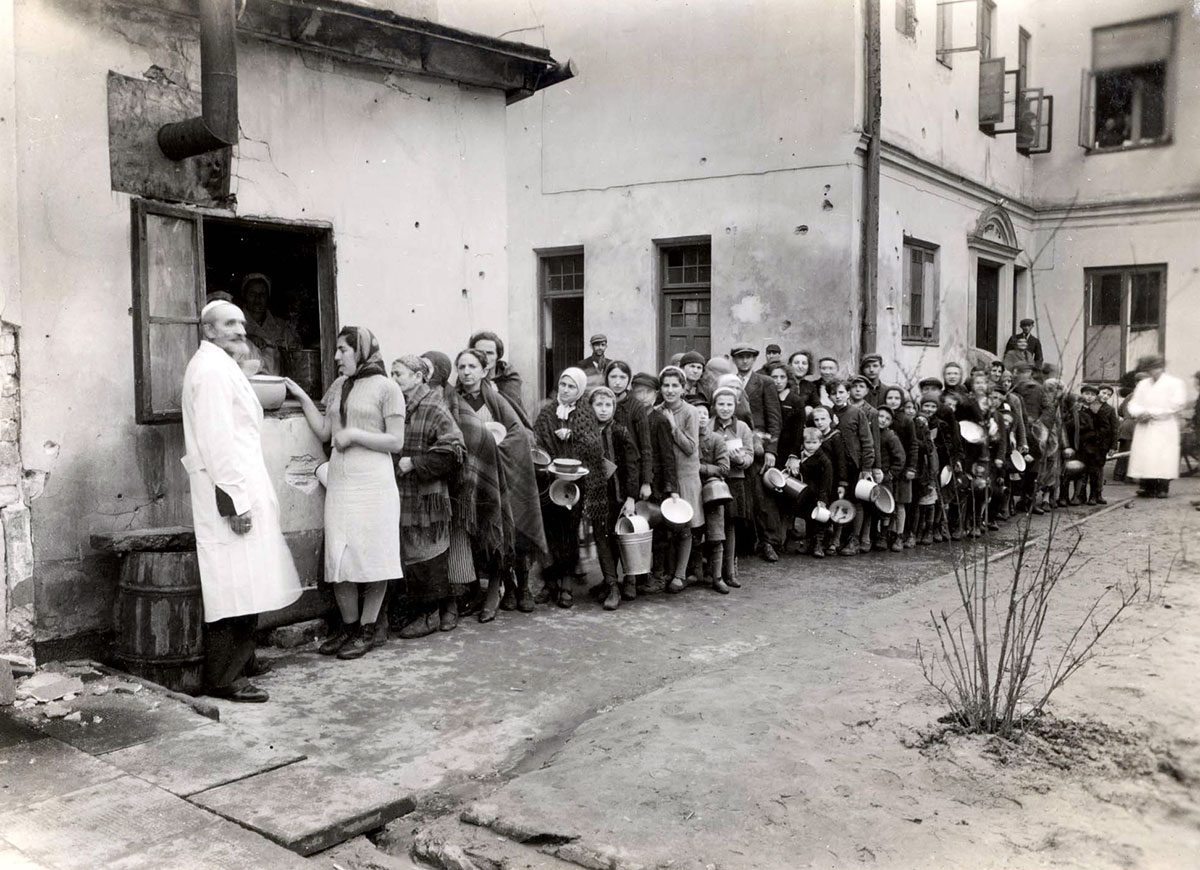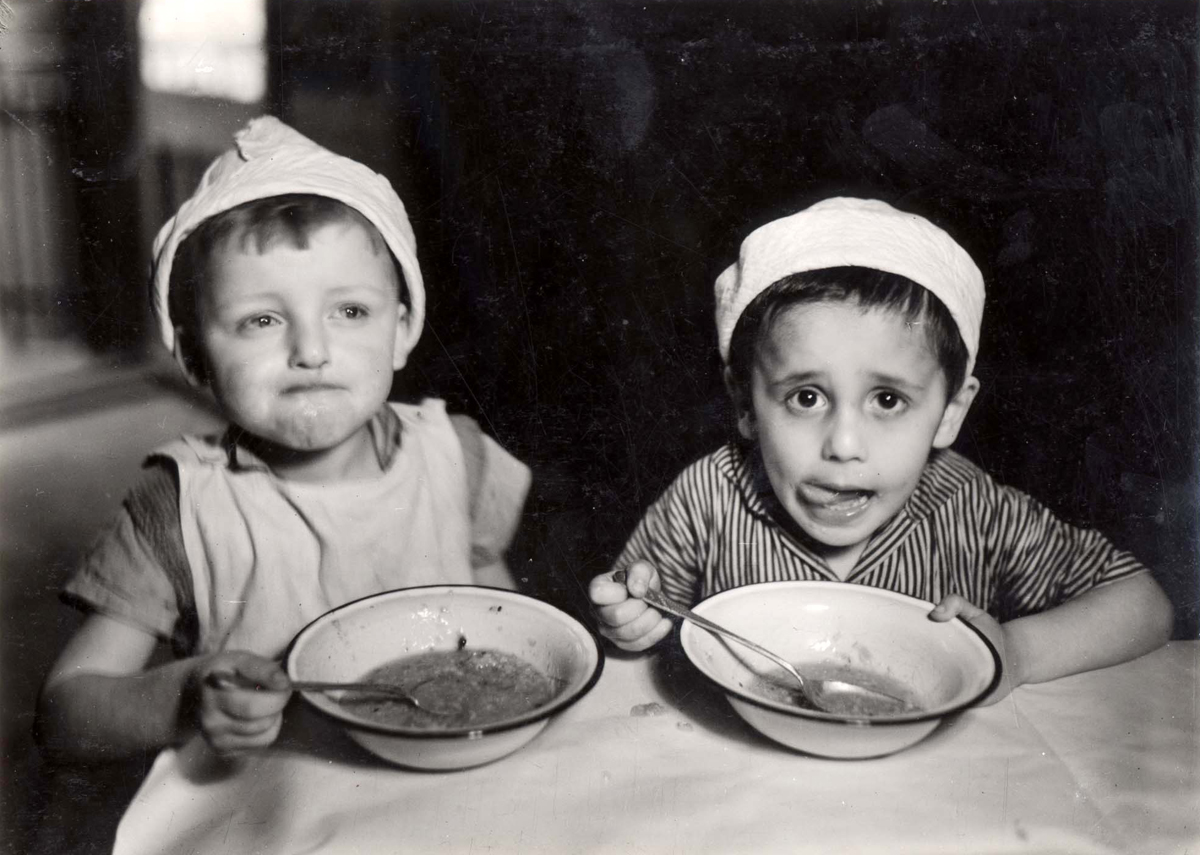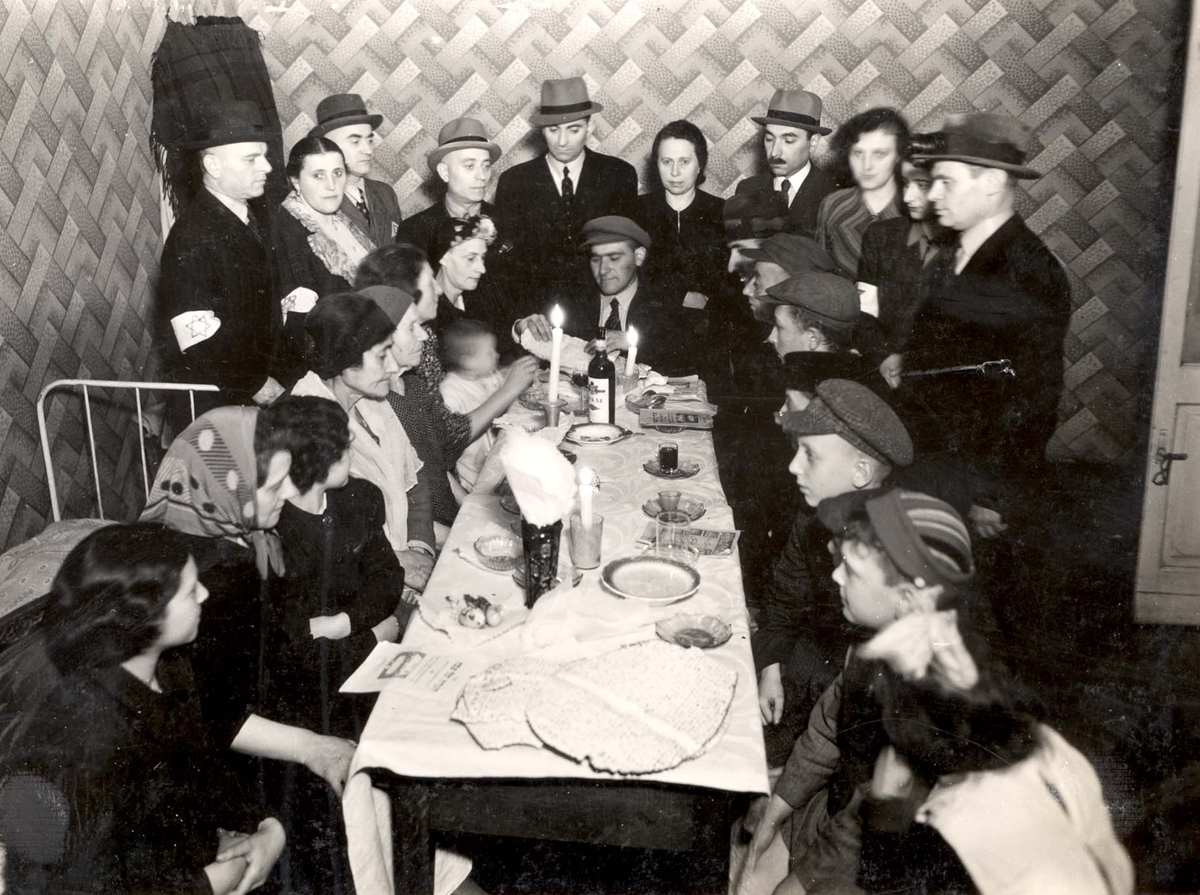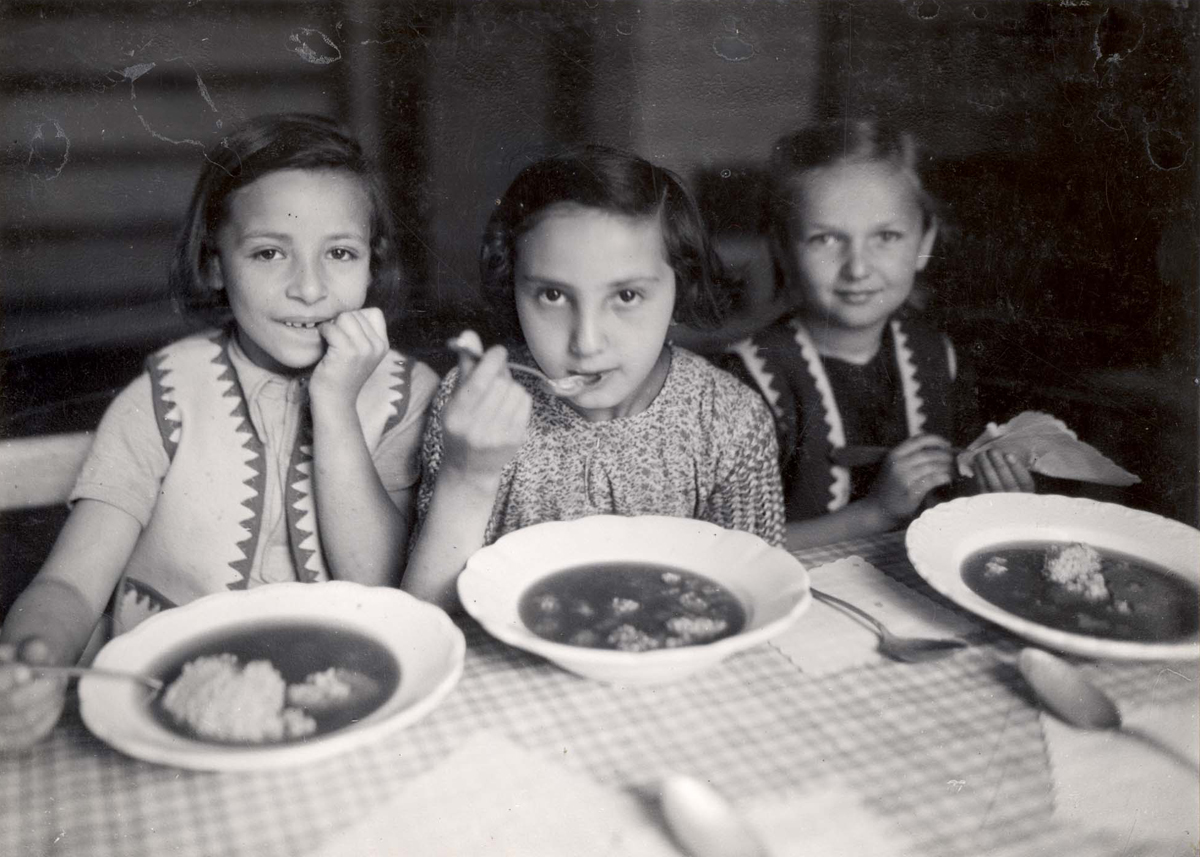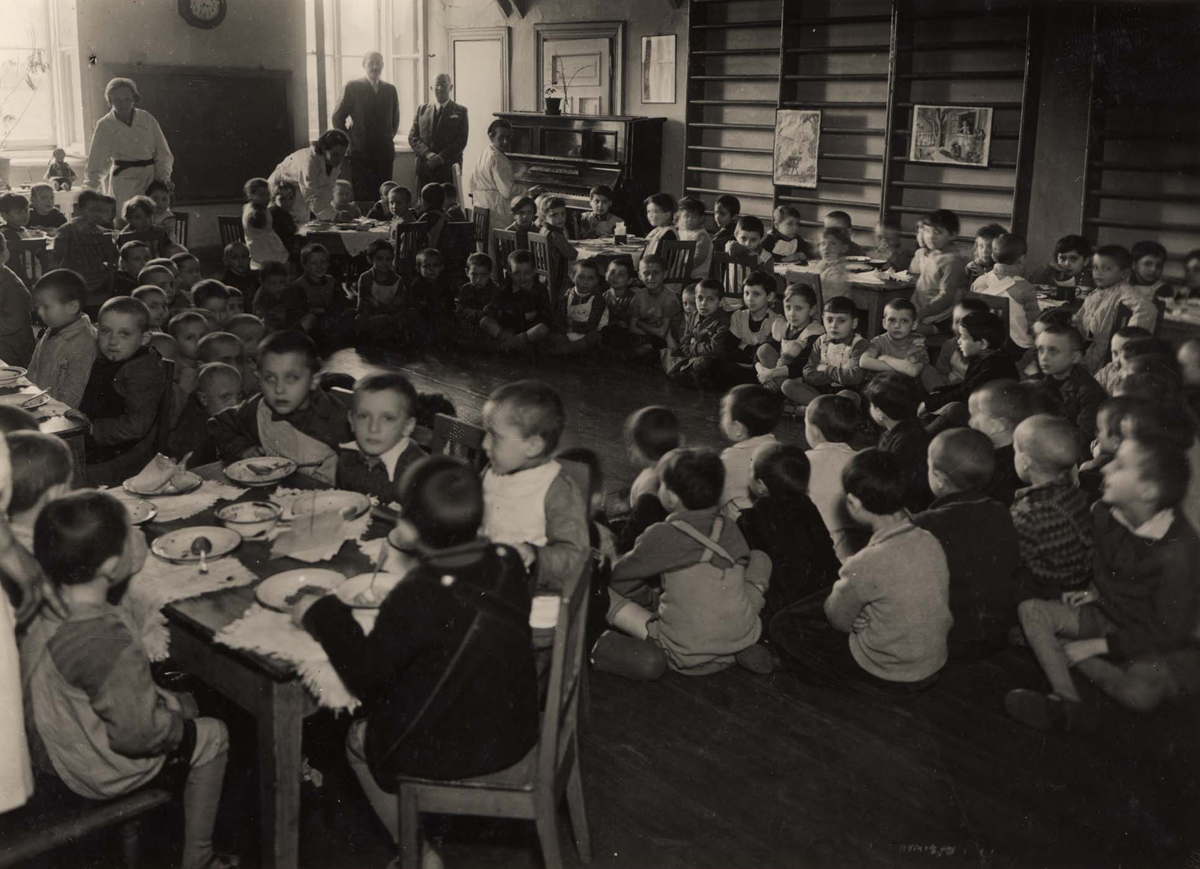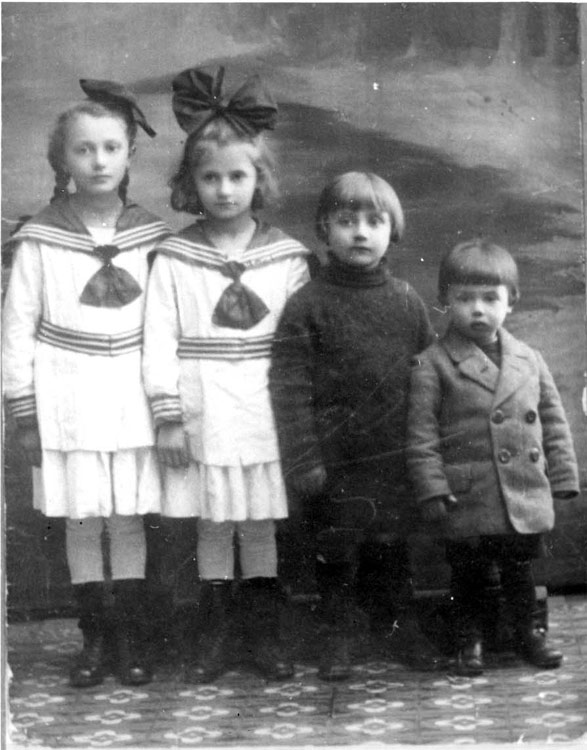Grades: 7 - 9
Duration: 2 hours
Trapped behind ghetto walls, the Jews of the Warsaw Ghetto suffered from starvation and the Nazi decrees designed to dehumanize them. Jews, however, found many ways to help each other through these difficult times. This lesson plan will highlight some of the organizations that were established to coordinate social welfare activities.
- Documents on the Holocaust, Selected Sources on the Destruction of the Jews of Germany and Austria, Poland and the Soviet Union, Yad Vashem, Jerusalem, 1981, Document no. 73.
- Emanuel Ringelblum, Selected Documents from Warsaw Ghetto Archives, Oneg Shabbat pp. 352.
- Rachel Auerbach, Testimonies from Warsaw,1985 (Hebrew), p. 64.
- Ibid, p. 76.
- Ibid, p. 67.
- Documents of the Holocaust, p. 232.
- Lazawert, Henryka, as quoted in Trunk, Isiah, Holocaust curriculum for Jewish Schools - Civil Self Defense, New York: American Association for Jewish Education, date unknown, p. 8.
- Documents on the Holocaust, p. 211. From an article by R. Domski (T. Borzykowski) in the underground newspaper of the Dror-He-Halutz movement in Warsaw, Dror, No. 3, August 1940.
Didactic Objectives
- Students will understand the dire situation of Jews living in ghettos.
- Students will discuss some of the dilemmas that various Jewish communal leaders faced at the time.
- Students will learn about different organizations that were established by Jews imprisoned in the Warsaw Ghetto in order to help other Jews in the ghetto. Through this, they will begin to understand about how man's inhumanity toward man can be combated by man's humanity toward man.
- This lesson will focus on some of these very giving people. Whether it was through mutual aid, soup kitchens, youth movements, or the smuggling that was done by young children, there were hundreds who, despite their own hardships in the ghetto, continued to maintain their dignity in order to help others.
Introduction
Even when Jews were forced to live in confined ghettos, when they feared deportation, and starved for food, there were those who were able to rise above the daily struggle to survive and help others. These individuals, and groups of people, are an example of those who were able to maintain their humanity in the face of unprecedented inhumanity.
Historical Background
On September 1, 1939, Poland was invaded by Nazi Germany. Below, is the first German order after the outbreak of World War II that deals with the "Jewish Question". Analyze this document:
Instructions by Reinhard Heydrich, on Policy and Operations Concerning the Jews in the Occupied Territories, September 21, 1939
Berlin, September 21, 1939 To Chiefs of all Einsatzgruppen of the Security Police. Subject: Jewish Question in Occupied Territory for the time being, the first prerequisite for the final aim is the concentration of the Jews from the countryside into the larger cities.
This is to be carried out speedily.
As far as possible, the areas…are to be cleared of Jews; at least the aim should be to establish only few cities of concentration so as to facilitate subsequent measures. In this connection, it should be borne in mind that only cities which are rail junctions, or at least located on railroad lines, should be selected as concentration points.
On principle, Jewish communities of less than 500 persons are to be dissolved and transferred to the nearest concentration center.1
Questions
- This document was written less than three weeks after the Nazis invaded Poland. What does this denote about Nazi Germany’s policy toward Jews under their occupation?
More Information
On the basis of this German order, Jews were incarcerated in hundreds of ghettos. Most of this lesson focuses on the period in the ghettos and how the suffering Jewish population devised ways to maintain their dignity and struggle to survive.
On the eve of World War II the Jewish population in Warsaw numbered 337,000, approximately 29% of the total population of the city. This figure rose to 445,000 by March 1941, with the influx of Jews from smaller towns. From the first days of German occupation, Jews in Warsaw were subjected to attacks and discrimination, such as being driven away from food lines, violently seized for forced labor, and publicly assaulted. Religious Jews in traditional dress were especially targeted, beaten, and ridiculed. Teachers, craftsmen, professionals, and employees of welfare and cultural institutions lost their positions, without any compensation, with little or no prospect of obtaining similar positions.
Harsh measures against Jews of Warsaw placed them in dire economic difficulties. As their resources dwindled, more and more Jews became penniless. As a result of the lack of food and other basic needs, many Jews became destitute, and gradually the death toll began to rise.
The number of needy cases steadily increased and it became apparent that a social welfare organization had to be created to provide assistance wherever possible.
Only by common effort,
By genuine and realistic work,
By great exertion,
By avoiding unproductive complaints and vicious accusations,
By working with heart,
By using sense,
By patience,
Will it be possible to weather the present grave times.2
Self Help
The Jewish community organized a social welfare committee known as the Zydowska Samapomoc Spolczna (Jewish Social Self-Help), or the ZSS, in order to provide assistance to Jewish residents.
"Centos", (the "National Society for the Care of Orphans"), ran schools and provided food, clothing, and shelter. These self-help organizations employed hundreds of people, offering a daily bowl of soup as salary. Among the most important elements of self-help were the "House Committees," which functioned in almost every apartment house. House Committees were not bodies that were appointed from above, but rather, emerged voluntarily from amongst the house tennants. There were almost 2,000 House Committees that fulfilled important functions, such as providing medical care for the needy, and organizing cultural events.
Masses of people ate meals at its soup kitchens, which gave out a bowl of soup and a piece of bread to all those who came. During the first half of 1940, the organization’s aid activities focused on opening public soup kitchens and distributing food to the needy. In addition they also helped thousands of Jewish refugees and captives who were pouring into the ghetto, and established institutions for child care.
Soup Kitchens
After Warsaw was occupied by the advancing German forces, Emanuel Ringelblum, the historian of the Warsaw Ghetto asked a young journalist, Rachel Auerbach, to assist the Jewish residents of Warsaw and the influx of incoming refugees. A soup kitchen opened, in an effort to feed the hungry and the homeless.
"On October 1, ..the day of the Nazis victory march into Warsaw, I marched through the side streets that we were allowed to walk on, in order to avoid the Germans. I have with me the necessary documents for the new kitchen, and a box of dried plums..."3
On the first day the kitchen opened, on 40 Lezsno Street, they served 50 meals. As time went on and the need grew, more and more soup kitchens opened, and Rachel oversaw their operations.
After the Warsaw Ghetto was sealed in November, 1940, there were restrictions on the amount of food allowed in the ghetto. The Nazis allotted only 180 calories per person, thereby starving ghetto inhabitants. As forced labor intensified, soup kitchens began serving thousands of people daily. By 1942, they were serving more than 100,000 people.
"If, in July 1942, according to the German statistics, there were over 350,000 Jews alive in the ghetto in the summer of 1942, this was because of the incredible organization, the desire towards life, and the wisdom of those who worked in the public soup kitchens as well as those who were in the civil resistance and all those who.. were able to help out."4
Many different people helped out in soup kitchens, such as teachers who also taught Hebrew to the children gathered for meals. Clearly, the kitchen became more than just a place to eat a hot meal.
"Soup kitchen.. its not easy to define this institution. A kitchen meant a great deal. It was an organization of welfare, and as time went on, especially once the ghetto was established, it became a unit of other activities, both underground and not, of the Jews of Warsaw. Political activities, cultural activities, and later on even the Uprising..."5
Rachel and her comrades could not have imagined that the kitchens would become some of the central places in the Warsaw Ghetto.
During the summer of 1942, the Nazis began the mass deportations of Jews in Warsaw to their deaths in Treblinka. Most of the soup kitchens closed during this time because most of the people who worked in these kitchens had been deported.
Rachel Auerbach survived the Holocaust and after the war moved to Jerusalem, Israel.
Questions
Look at the side photographs portraying children and adults in public kitchens or schools.
- Notice the different types of people who benefited from the soup kitchens.
- Notice the different types of kitchens.
Both adults and children were in need of these kitchens. The feeling of helplessness and starvation was rampant in the ghetto affecting all ages. There were different types of soup kitchens. There were kitchens where children were able to sit down and eat together (take note that there were not enough chairs and tables for all) and there were kitchens that served a bowl of soup at the door.
Emanuel Ringelblum on Self-Help in the Ghetto
Despite the will of Jews to help themselves, they were trapped without the means to operate and maintain soup kitchens. On May 26, 1942, Ringelblum notes:
“…Relief work doesn’t solve the problem; it only keeps people going a little while. The people have to die anyway. It lengthens suffering but cannot save them; if it (the Jewish Self-Help) really wanted to do anything, it would have to have millions of zloty at its disposal every month, and it does not have them. It remains a proven fact that the people fed in the soup kitchens will all die if they eat nothing but the soup supplied and the dry rationed bread. The question thus arises whether it would not serve the purpose better to reserve the available money for selected individuals, for those who are socially productive, for the intellectual elite, etc. But the situation is such that, first of all, the numbers even of such select individuals is quite considerable, and there would not be sufficient even for them. Secondly, the question arises why should one pronounce judgement on artisans, laborers and other useful persons, who were productive people back in their small towns, and only the ghetto and the war have turned them into non-people, into scrap, into human dregs, candidates for mass graves. There is left a tragic dilemma: What shall one do? Shall one (hand out the food) with little spoons to everybody, and then no one will live, or in generous handfuls to just a few...?"6
Discussion Questions
- In this diary entry, Emanuel Ringelblum comes to a painful realization about all of the relief work that he and his comrades are doing. Describe this realization.
- In the above quote, Emanuel Ringelblum is left with a terrible dilemma regarding food distribution. He asks, “What shall one do?” Describe the dilemmas he faced.
- Compare and contrast the pre-war photograph to the right with the photo below it, depicting the ghetto as conditions worsened.
Smuggling
The following poem was written by Henryka Lazawart, a young Polish-Jewish poet who was murdered in the Treblinka extermination camp. She wrote this poem in honor of the children who risked their lives to smuggle extra food for their families into the ghettos.
Read the poem and answer the questions below:
THE LITTLE SMUGGLER
by Henryka Lazawart
Past walls, past guards
Impudent, hungry, obstinate
I slip by, I run like a cat
At noon, at night, at dawn
In foul weather, a blizzard, the heat of the sun
A hundred times I risk my life
I risk my childish neck.
Under my arm a sack-cloth bag
0n my back a torn rag
My young feet are nimble
In my heart constant fear
But all must be endured
All must be borne
So that you, ladies and gentlemen,
May have your fill of bread tomorrow.
Through walls, through holes, through brick
At night, at dawn, by day
Daring hungry, cunning
I move silently like a shade
if suddenly the hand of fate
Reaches me at this game
’Twill be the usual trap life sets.
You, mother
Don’t wait for me any longer
I won’t come back to you
My voice won’t reach that far
Dust of the street will cover
The lost child’s fate.
Only one grim question
The still face asks
Mummy, who will bring you bread tomorrow?7
Questions
- What were the dangers that the little smuggler faced in order to obtain bread? (walls, guards, fences, extreme weather conditions, risking his life, fear in his heart)
- What did s/he worry about? Was s/he afraid of dying? (concern about who will bring his/her mother food tomorrow)
- Who is taking care of whom? (Children caring for parents)
- How often does the child smuggler have to risk his/her life for bread? (all seasons of the year)
- This poem focuses on 3 groups of people. Identify these three groups. Describe the role each one has in the poem.
(smugglers, ladies and gentlemen, Germans)
Youth Movements
No description of life in the ghettos would be complete without discussion of Jewish youth movements that existed in Poland before the war and then played a powerful role in ghetto rebellions. About seventy thousand young Jews belonged to the different movements and their leadership was forced to make agonizing decisions toward Jews. From a peace-loving, romantic and idealistic program before 1939, they were forced into a reality of activity in underground secrecy and finally into violent armed revolt. The youth movements played a crucial role in planning and organizing the Warsaw Ghetto Uprising that began on April 19, 1943. This is an important topic in and of itself, worthy of study and discussion. Here it is only part of the lesson and not the main topic.
In the following document, the different youth movement activities and their dilemmas regarding what should take precedence in the given war situation are described.
"What must we do in this situation? In which direction shall we turn our attention?..we must arrange courses in reading and writing Yiddish, Hebrew, and in arithmetic..to draw the street youth into warm social surroundings, to attend as far as possible to their personal future, and to implant in them a feeling of solidarity and responsibility: and with the aid of singing and games to create a youthful atmosphere for a Jewish youth that has become old before its time. The first group must be enabled to acquire an elementary education; we must arrange courses in reading and writing Yiddish, Hebrew, and in arithmetic, etc; the other part of Jewish youth must be helped to a consciousness of its common fate with the Jewish masses..its feeling for the people must be awakened..it must be drawn into public activities in every part of Jewish life..enriched with the spiritual treasures which the Jewish people have created through the ages. And, finally, we must gather together the best of the Jewish youth, which has already received its education in our movement and forge it into a cadre that is prepared for battle and that will lead the way for Jewish youth..."8
Questions
- What should take precedence in the given war situation?
- What are the different activities suggested in the document?
Many different activities are mentioned in the above document. We think it is important for students to learn about how Jews in youth movements grappled with their situation identified with Jewish history and culture and later organized a revolt. The youth movement leaders already foresaw their fate before the ghetto was closed in November 1940.
Summary
Concluding Activities
- Reflect on your feelings after what you have just read.
- Often the dilemmas of the Holocaust are referred to as 'Choiceless Choices'. After reading about the different dilemmas that people faced in the ghetto, what does this phrase "Choiceless Choices" mean to you?




